I’ve never really had the impulse to take photos in a museum. I figured professional quality photos of most if not all of the objects on display could be found online, so why bother.
However, when my girlfriend and I planned a trip to the Institute of Natural Sciences (in Brussels) last December, I decided to look at it another way. I wanted to try to regard the museum pieces (and the other visitors) not as objects but as subjects for my photos – in other words, street photography at the museum.
I started shooting film again (after a 10 year gap) last summer, when my in laws moved house and my father in law gave me his old Minolta SRT-101, along with a standard 50mm as well as an old Sigma 135, all manual focus of course. Some time later I discovered a Nikon F801 in great condition in an unused darkroom at work (the unused darkroom itself just sitting there was a nice find as well of course). Because I already owned a Nikon DSLR and several AF-D lenses this greatly expanded my options for shooting film.
For the next couple of months I experimented a lot. Trying different emulsions, pushing film, trying 120 format (in a Nettar and a Lubitel 2). Eventually I landed on Fomapan and decided to stick to one brand of film for a while, in order to get to know it a little better under different circumstances.
I use the two 35mm bodies alternatively, for a couple of reasons. They’re very different, the Minolta being fully manual while the Nikon has PASM-modes, an exposure compensation dial, a self timer, two metering modes and autofocus (both single and continuous). In short they’re about as different to one another as two 35mm bodies can be. I like both types of camera and being able to switch between them keeps both experiences fresh and interesting. It’s also very handy to keep different speeds of film in either body, so I can choose between them depending on lighting conditions. I mostly use Fomapan 100 in the Minolta and 400 in the Nikon.
For our trip to the museum I used the Nikon with a 50mm 1.8 AF-D and Fomapan 400. I set the camera to -1 exposure compensation in order to catch a bit of the dark atmosphere inside the museum. Foma themselves state that you can underexpose by up to two stops without any change in processing, so shooting it at 800 ISO seemed like it would be ok to do. I’m quite happy with the way these turned out too and I think the pictures capture the atmosphere inside the museum quite well.
The Institute of Natural Sciences
The Brussels Institute for Natural Sciences is known colloquially as ‘the dinosaur museum’ – for obvious reasons. Its centerpiece are the thirty mostly complete iguanodon skeletons found 322m underground in the Bernissart coal mine at the end of the 19th century. These are all on display in a 300 m² glass case – truly impressive. Aside from the iguanodons, there are several replicas of other dinosaur skeletons (a T. Rex, a Plateosaurus etc).
The museum also houses exhibitions about evolution of humankind and other animals. Especially the ‘Living Planet’ section, housing 850 mounted animals including a giraffe and a beluga, makes for some interesting views.
Shooting dinosaurs in low light
The low light situation obliged me to use larger apertures (up to maybe 4 or 5.6) – which of course meant I wasn’t able to get the colossal dinosaur skeletons fully in focus. If anything I like to think it adds to the sense of scale.
I home developed the roll in Adonal (1+25) for five and a half minutes and digitized them using a DSLR and the pixl-latr afterwards. I inverted the negatives using the free grain2pixel photoshop plugin (which I think does a great job automating the process) and tweaked contrast just a little bit. Fomapan scratches easily (and I have difficulty being prudent) so I removed some spots with the healing brush, but overall these are basically untouched.
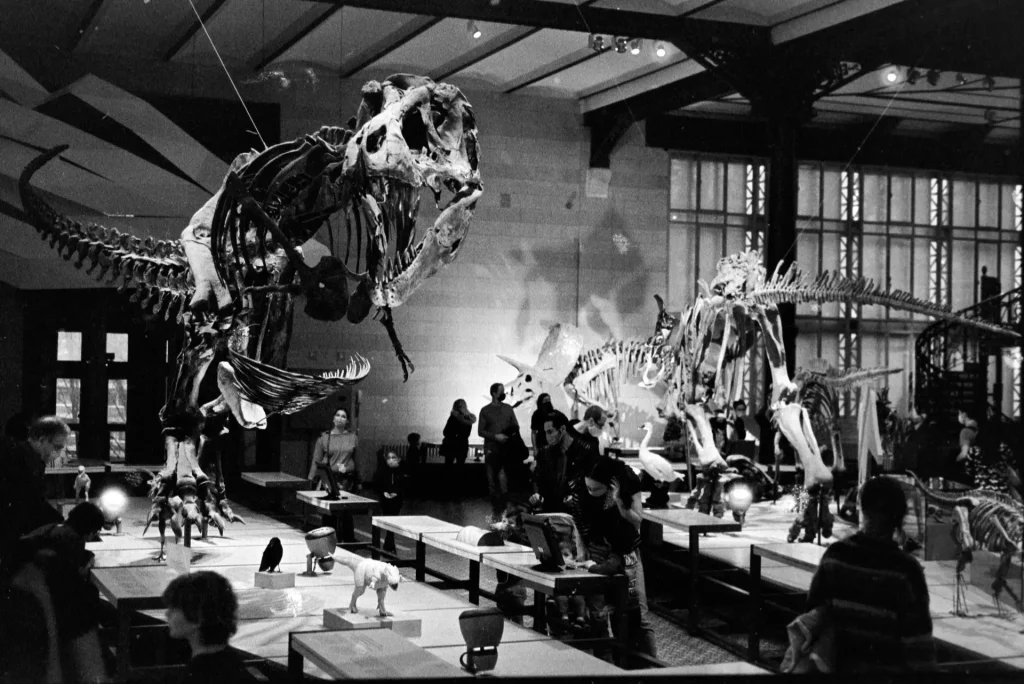
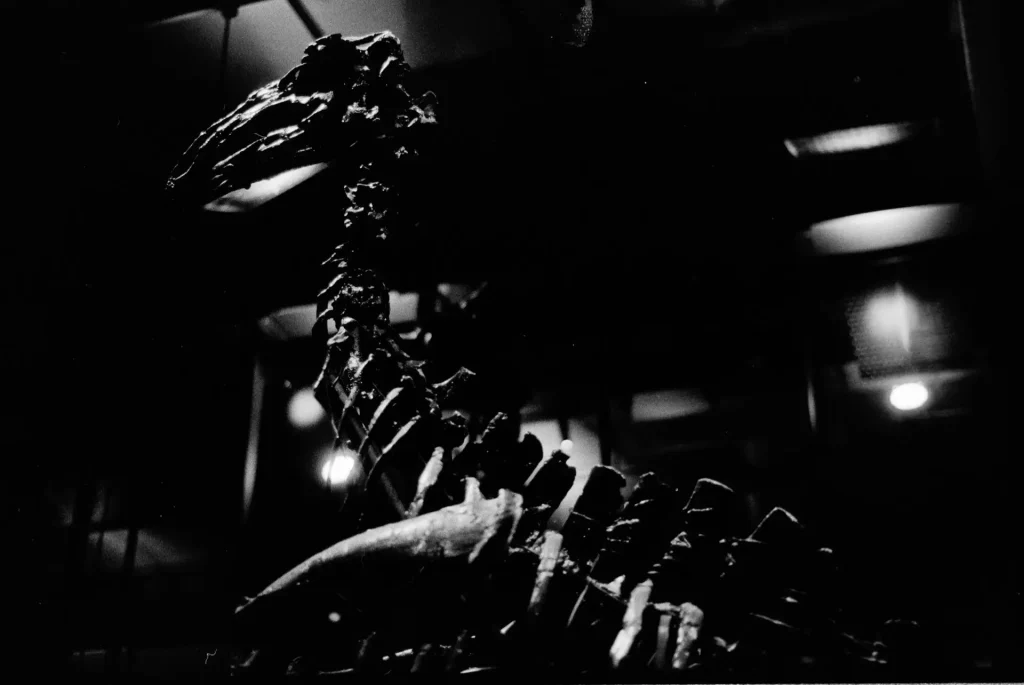
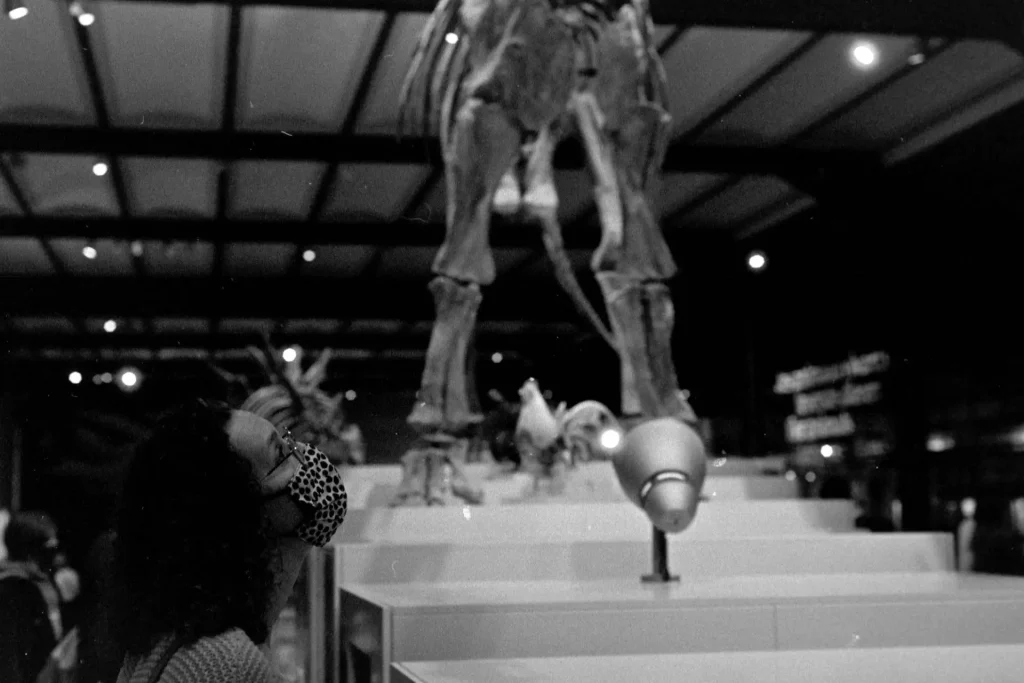
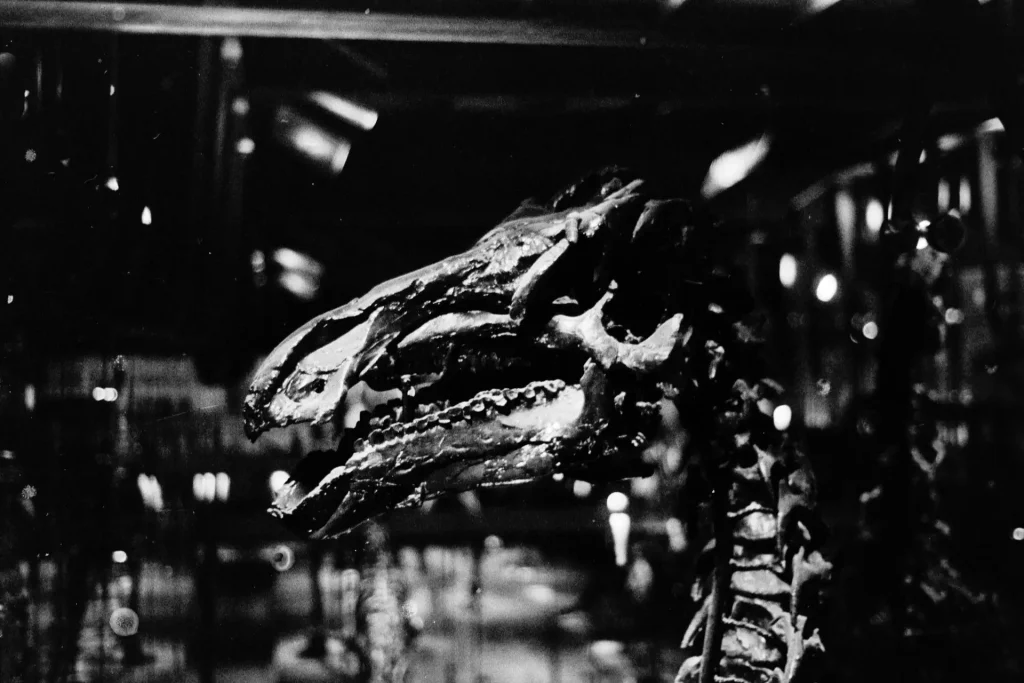
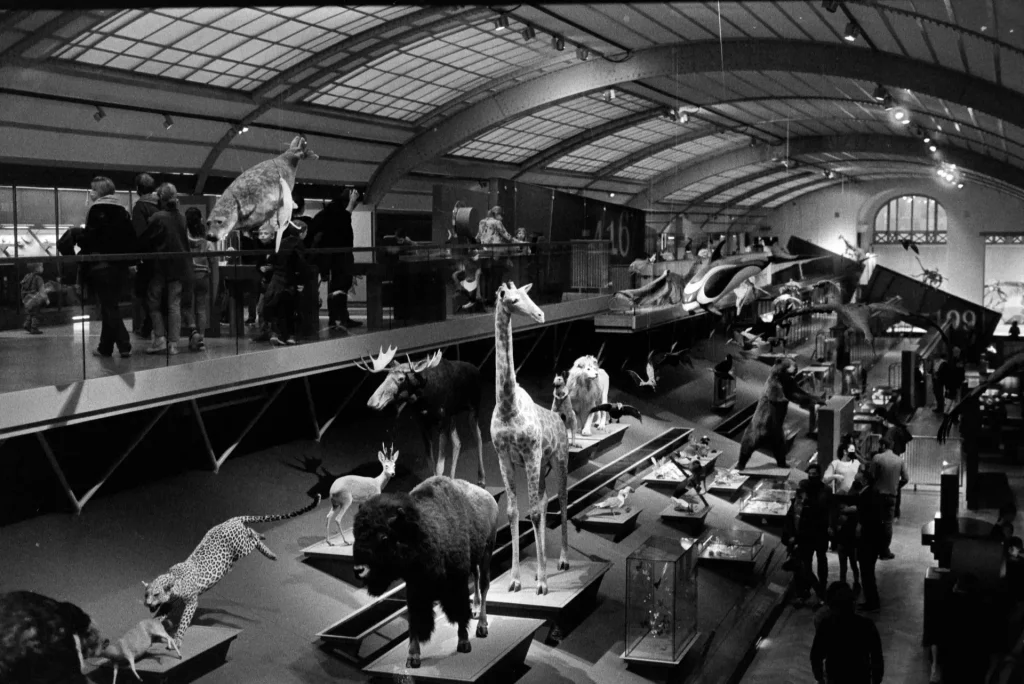
All in all I’m very happy with this roll. Skeletons and mounted animals aren’t an everyday subject and I hadn’t shot a museum visit on film before. It’s something I can definitely recommend and hope to do again myself sometime soon.
Share this post:
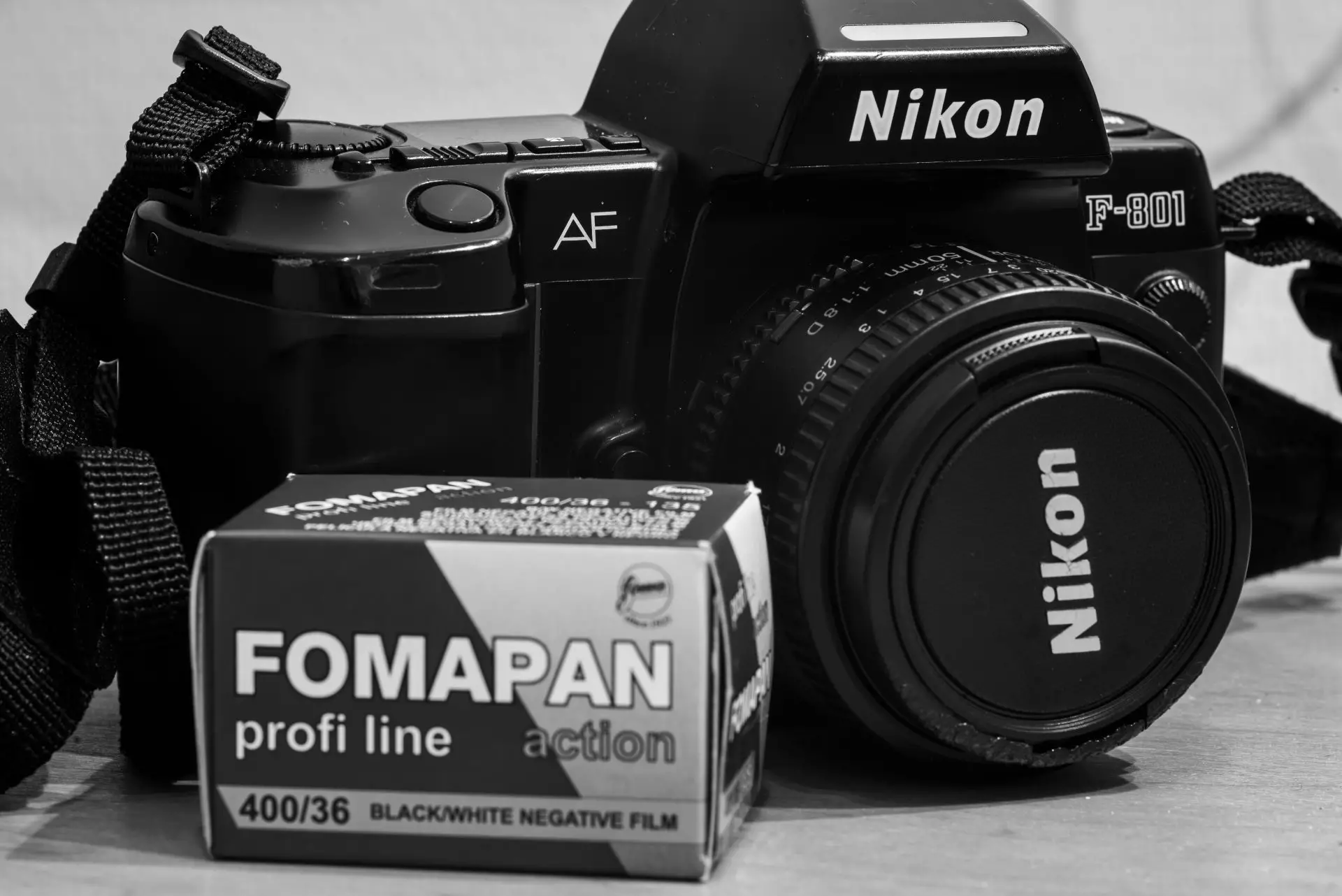








Comments
DeeDee on 5 Frames of Dinosaurs with a Nikon F801 and Fomapan 400 – By Lukas Meekers
Comment posted: 18/02/2021
Comment posted: 18/02/2021
Patrick Abe on 5 Frames of Dinosaurs with a Nikon F801 and Fomapan 400 – By Lukas Meekers
Comment posted: 18/02/2021
I think I was using Kodachrome-X (ASA 64) for general/tourist shots around Washington D.C. I think I was using a Sekonic L-98 CdS light meter, which could (sorta) read low museum light levels. I arrived at a Triceratops skeleton display, next to a "touch and feel" Dinosaur Femur. The slow speeds on the Leica IIIa were dodgy at best, so I opted for a "brace against anything and freeze" Bulb exposure of one second.
Would anything be recorded? I didn't find out until I had the Kodachrome-X developed after the "Summer of 64." Long story short, I got an image of the Triceratops skeleton, in red-orange! Was it in focus? Who cares, a hand-held 1 second exposure had worked! I still have Ye Olde Leica IIIa and the "apparently pedestrian" 50mm f/3.5 collapsible Elmar, to be used as long as 135 film is still available.;)
Comment posted: 18/02/2021
WilliamB on 5 Frames of Dinosaurs with a Nikon F801 and Fomapan 400 – By Lukas Meekers
Comment posted: 19/02/2021
TobyVPhoto on 5 Frames of Dinosaurs with a Nikon F801 and Fomapan 400 – By Lukas Meekers
Comment posted: 20/02/2021
I have a loan F-801s at the moment and it's a very nice camera. I don't have an electronic film camera at all, and I'm finding it a luxury not to be having to set the exposure bu hand for a change.